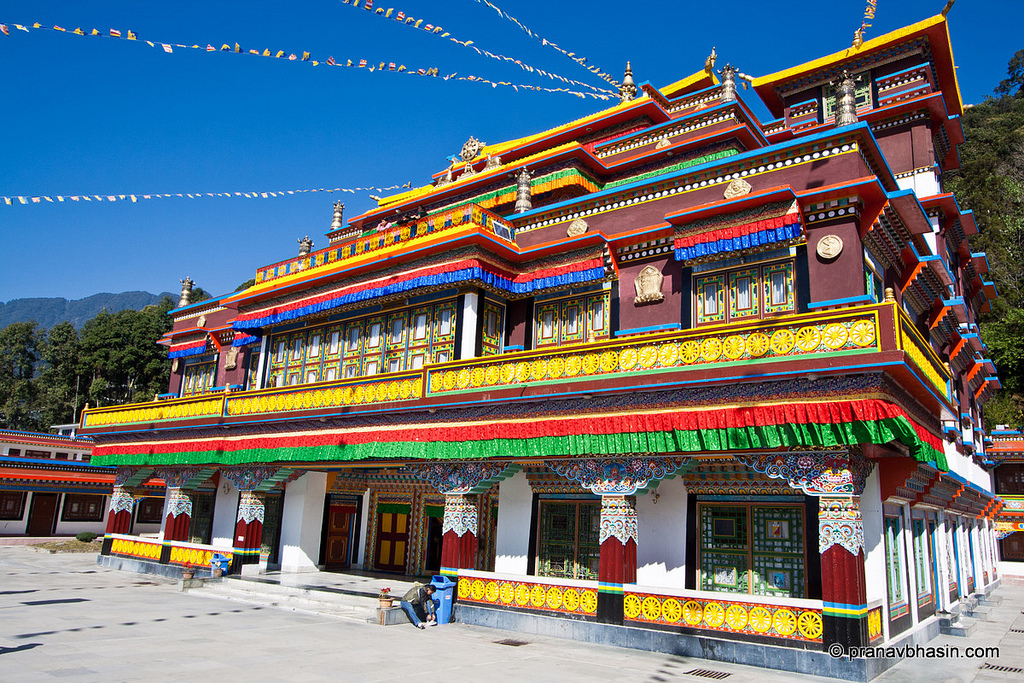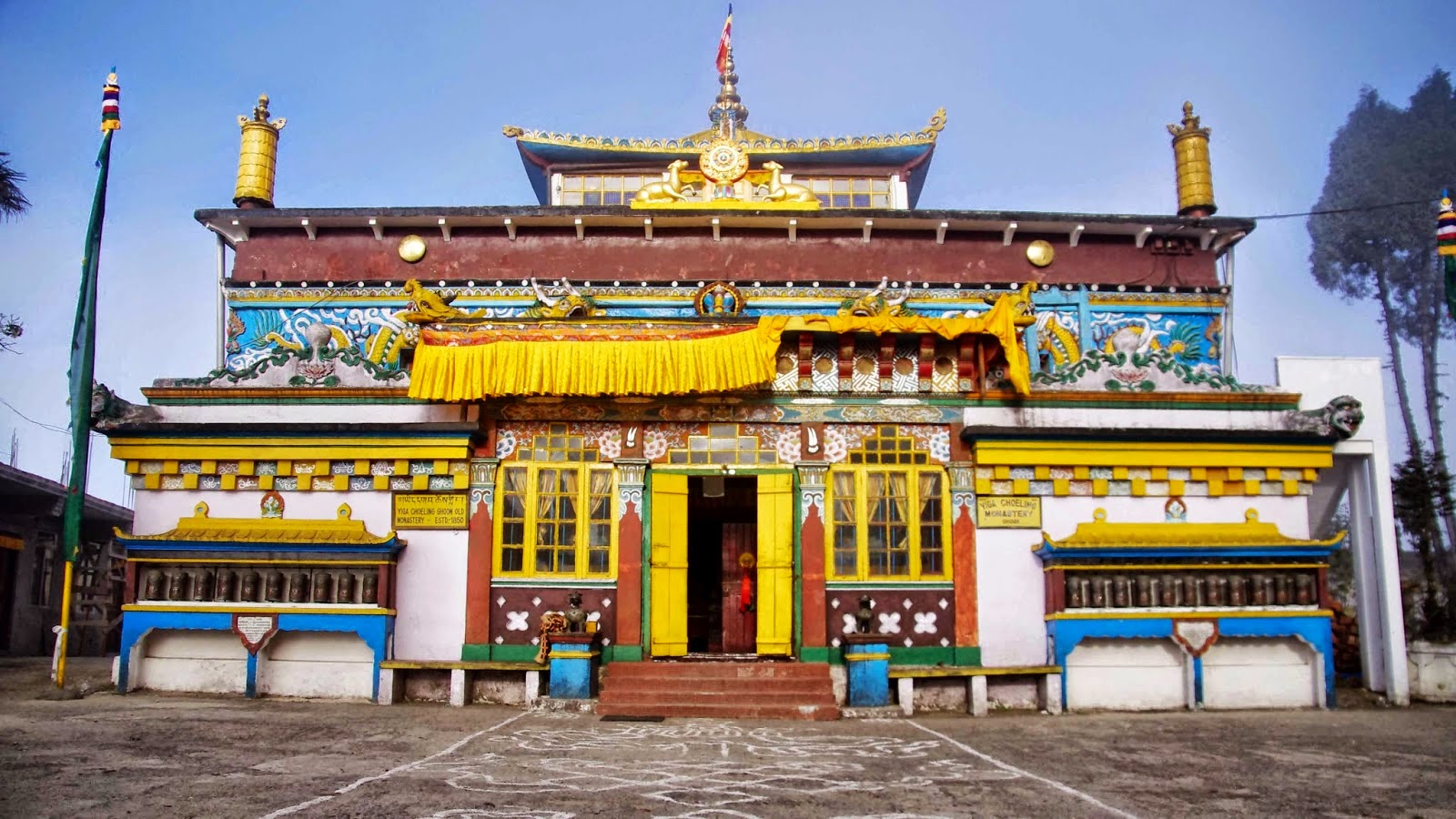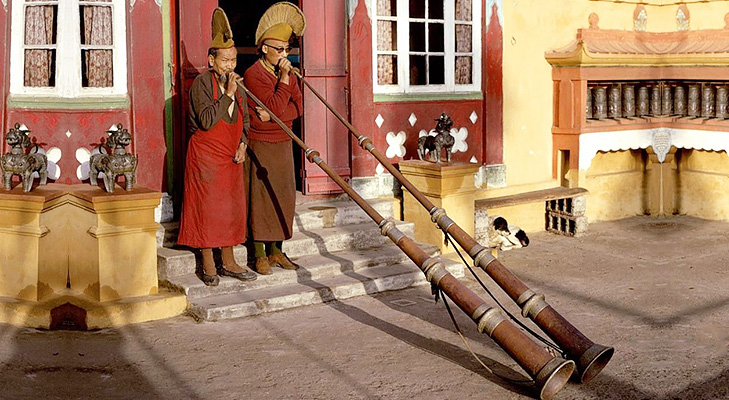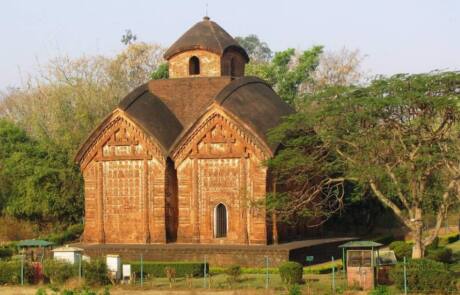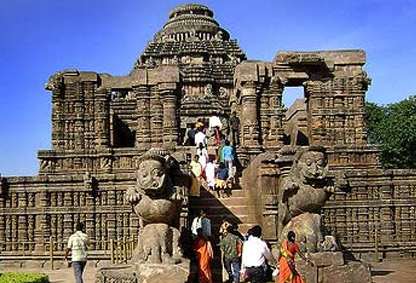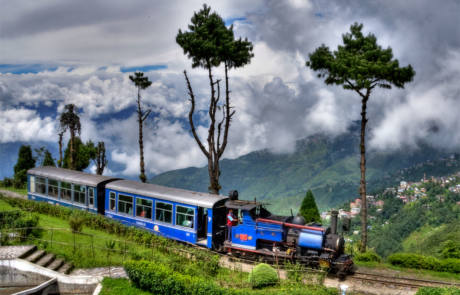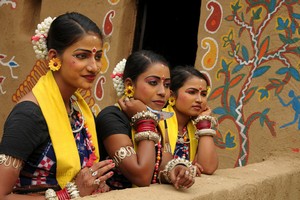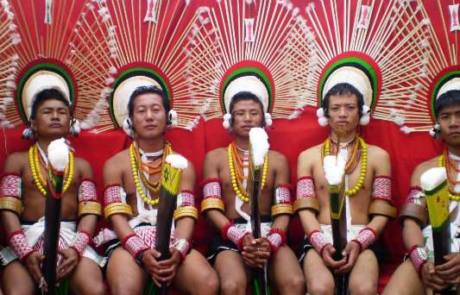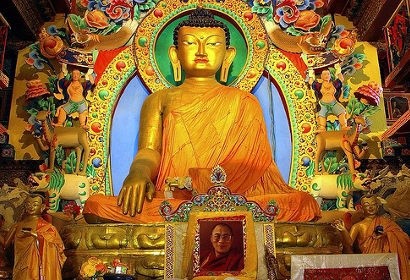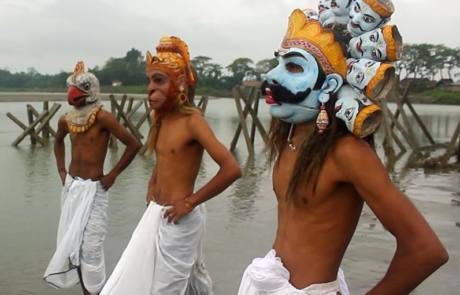10 DAYS/9 NIGHTS
Want to Know More About The Tour?
ABOUT
In the Northern region of Bengal lie some of the country’s least visited areas. The ‘Garden State’ of Sikkim, small but utterly beautiful; the fabled town of Darjeeling in the heart of the tea-growing country, tranquil Buddhist monasteries and undisturbed tribal settlements are just some of the sights that will greet you on this journey through the north, with the majestic and mighty Himalayan mountain range as your backdrop.
Pre-departure planning is important. Here are certain things you should watch for and plan for.
Visas
Check with the Indian consulate or embassy in your country to find out if you will need a visa to visit the country of your destination, especially for an extended period of time. Some countries have extremely detailed and complicated entry/departure laws and treat visits of a week or two very differently from longer stays.
Money
If you’re traveling to one area, check the cost of living there. If it’s high you’ll probably want to budget more carefully and save some money before leaving. The lower the cost of living the less you’ll have to save, but be sure to have a backup reserve in emergency cases.
General Tips
Talk to other people who have done a similar trip.
If you don’t know anyone personally, try any of the dozens of online travel websites full of first-person travel stories covering every possible type of trip.
Plan big and loose. Read everything you can about the area.
There may be sights and attractions you didn’t know about. A rough outline of your trip might have three or four target points and a variety of ways to get between them.
You don’t want to find out that the weather isn’t what you thought, or the guide book was incorrect, after committing to 6 weeks in a specific spot.
Some trips will allow you more leeway than others. Travel plans in Asia can often be made day-by-day while summer travel in Europe should be organized at least a few weeks ahead unless you’re prepared to hunt around for hotel rooms and train seats.
Set up a pre-trip timeline so you don’t end up with a full to-do list during your last week of work or school.
Things to consider are doctor’s visits for a check-up, inoculations, and prescription refills; purchasing plane tickets; renewing passports, and obtaining visas and other documents.
Check your insurance coverage abroad and purchasing additional travel insurance if needed. Don’t forget visiting friends and family members!e
The longer the trip, the lighter you should pack. This might seem strange, but it’s true you can afford to lug a heavy bag around for a week or two, but do you want to have anything extra for a year?
Stick to the absolute basics and know what you can and cannot buy at your destination(s). There’s no point in bringing 6 months of toothpaste to Europe or buying a sarong at home to take to the tropics. If you are visiting several climates, try to arrange it so you visit the warmer places first and the coldest last. That way you can purchase sweaters and long pants and not have to carry them any more than needed. Alternately, visit cold climates first and then ship unneeded layers home — or sell them off.
A good rule of thumb is to bring one outfit for the hottest day you’re likely to encounter, one for an average day, and one for the coldest.
Make sure everything goes with everything else (if that’s important to you), and remember that layers are always best.
Be prepared for uncomfortable trips. You will often find yourself in a busy, cramped, economy class environment and it could be for many hours – especially long plane trips.
If you want to arrive at your destination refreshed and able to enjoy the sights, then try a good quality travel pillow to support your head, some earplugs to block out the screaming babies, and an eye cover to block out the sun or cabin lights.
Just avoid those cheap U-shaped pillows from airport shops – your head drops forward and you wake up with a stiff neck.
Make contact with the locals before you go.
Maybe you have a friend-of-a-friend or a foreign exchange student from high school you remember, or just found a friend through a travel website; almost everyone is happy to welcome a foreign visitor to their hometown. This might be as elaborate as a home stay for a few weeks, or just coffee in their hometown or dinner at a local restaurant.
Getting Around
Make your own way or if there are too many great things to see, follow the lead of a guided tour.
A perfect city for exploring on foot with a shop around every corner. Much of the inner city can be walked without trouble, however, in parts walking includes crowds, uneven streets, heavy traffic, and skinny sidewalks. If that’s a problem, there are plenty of taxis to ride in and scooters to rent.
How to Travel
- Subway – The metro is the fastest transportation. Running 5 am to 10 pm every day in all the Major Cities of India.
- Bus & Train – Operated by an independent organization, buses, and trains include wifi access for the public. You can take any bus or train marked with the (B Public) sign for free.
- Taxi – Available in all parts of the city. From a restaurant or hotel, you can have them call the city taxi service.
- Car – Rental cars are easy to get and hotels have good parking prices. Once in the main city, you can often walk so we suggest returning the when you arrive.
- Bike – The best way to get around, other than walking, is by bike. If you don’t mind hills, you can bike anywhere. If that’s not for you, stick to the inner city with your bike.
Mini Trips
Just a few miles away you can explore the history and legacy, drink wine and relax. You can wander the hills or be lulled by the fountains. If you have time, the attractions can fill 3 days. We’ve highlighted the best ones here.
Tours
Because of the number of sights to see, some first-time visitors should start with an organized tour. Some things can be covered in-depth, others are just useful for getting your bearings.
The leading tour operators use local historians to lead their tours. Guides offer walking tours, including visits to monuments, museums, and historic locations, as well as eating tours. Tour prices can be high, but most participants consider them a trip highlight. In addition, there are many family related tours, sights, and more appealing activities for children.
Walking tours, like the 3-hour ghost tour, is exclusive in the early evening. A bus excursion ruins special tours like you’ve never seen. Also worth consideration, a group of art historians and architects do a theatrical retelling of dramatic scripts. Go on a tour, and expect guides to break out into a rendition of “Singing in the Rain”, it’s a lot of fun.
- Himalayas – Tea Estates
- Darjeeling – Amazing Views of Himalayas
- Pelling–Buddhist Monastries, Ruins and Lakes
- Kalimpong Buddhist Monateries
T ravel Resources
Travel planning is about more than just knowing where you’re going. Prepares to navigate, take control and be ready for anything. This section helps you steer clear of disaster and stay open enjoy the unexpected.
Quick Tips
- Banks – Open Monday to Friday 9am to 2pm. Some banks are closed for lunch.
- Emergencies – For police, dial a local phone number; for ambulance call a hospital.
- Internet Access – Wifi is standard in most hotels and free in many coffee shops.
- Mail – Buy stamps at the Post Office. Convenient post offices are located all cities. Most are open Monday to Friday 9am to 3pm.
- Safety – Pickpocketing can be a common problem. It is suggested for men to keep wallets in their front pocket. Purse snatching also occurs at times.
Visitor Information
This site contains information with a very personal and friendly structure. It also has great links to other related sites online.
Information, internet access, maps, and train passes are available at local Tourist Information terminals. These are located at various sites around the city. Expect a wait if you arrive late in the afternoon or during lunch time. Local travel agencies are also helpful for quick information and finding hotels. There is no service charge for these services. Hours are Monday to Friday 9am to 5pm, and Saturday 10am to 2pm.
Transportation
Getting in from the airport and other arrival locations. Travel planning is about more than just knowing where you’re going. Prepares to navigate, take control and be ready for anything. This section helps you steer clear of disaster and stay open enjoy the unexpected.
- Plane – Flights arrive at the main airport near city center. If flying from European cities, you might land at a connecting airport. There is a tourist information office at the Terminal E, international arrivals, open 8am to 6pm.
- Train – A train station is on the lower level of the airport. To get into the city, follow the marked signs.
- Taxi – From the airport there is a flat-rate for the 1-hour trip, depending on traffic. Hotels charge up to $80 for shuttle service.
- Train & Bus – Trains and buses arrive a city center. This is the transportation hub for the city and is surrounded hotels.
A perfect place for exploring on foot, with local shops around every corner. You will eventually walk somewhere, it’s just going to happen. If you don’t like crowds, uneven cobblestones, heavy traffic or narrow sidewalks, take a taxi or rent a scooter.
You will be met upon arrival and transferred to your hotel where you will stay for two nights in Kolkata.
Today enjoy a full-day guided tour of Kolkata including the Botanical Gardens, Victoria Memorial (closed on Mondays), India Museum and Glenburn Experience.
This morning take a flight to Bagdogra. On arrival in Bagdogra, you will be transferred to Darjeeling for your two-night stay. Darjeeling was created by the British as a military and administrative centre to escape the heat of the plains and retains a special ambience to this day. The views of the Himalayas are stunning and there are many local attractions worthy of a visit. Darjeeling, famous around the world for tea, is also known as the ‘Queen of Hill Stations.
Today enjoy a sightseeing tour including visits to Tiger Hill for spectacular views of the Himalayas and the Kanchenjunga. Also visit Ghoom Monastery, the Zoological Park, the Tibetan Refugee Centre and the Himalayan Mountaineering Institute.
After breakfast, you will begin your day of sightseeing, first visiting Tiger Hill [2590 metres] to view the sunrise and reflection on Kanchenjunga and Mt. Everest. This will be followed by the famous toy train ride up to Ghoom Monastery.
Upon arrival at Ghoom, you will visit the Ghoom Monastery and see the Yiga-CholingGompa, a Yellow Hat sect Buddhist monastery. The 19th century Gompa, one of the oldest in the area, enshrines an enormous gilded statue of the Maitreya Buddha and also houses valuable Tibetan manuscripts.
In the afternoon, you will be taken for a half-day sightseeing tour of Darjeeling – visiting the Himalayan Mountaineering Institute. After the successful ascent of Mount Everest on the 29th May 1953, by Late Tenzing Norgay and Sir Edmund Hillary, the mountaineering in India got impetus. Consequently, the Himalayan Mountaineering Institute was established on the 4th of November 1954.
Wind up your day with a visit to the Tibetan Refugee Centre – which started on the 1st of October 1959. At that time, following the dramatic escape of His Holiness Dalai Lama, thousands of Tibetans leaving their hearth and homes, fled to the neighbouring countries to live as free human beings. You will also have a ride in the Himalayan Queen, a train.
This morning drive through beautiful countryside to the small hamlet of Pelling (a 4 Hours journey). In the afternoon, take a tour of the awe-inspiring Pemayangste Monastery, the second oldest of its kind in Sikkim, and the sacred Kheopalry Lake and Rabtense Ruins. Stay the night at Mount Pandim.
Today you will be driven to Gangtok, en route you will visit the 18th Tashiding Monastery (a six-hour journey). Gangtok (meaning ‘High Hill’) is the capital of the Sikkim state and sits on a ridge overlooking the Ranipul River. At an altitude of 1750m, Gangtok became the state capital in the mid-19th century and has undergone rapid development since then. It is a bustling, lively, city with a population made up of Nepalese, Tibetans, Bhutea and Lepcha as well as migrants from West Bengal. Spend the afternoon at leisure here and stay in Gangtok for two nights.
Gangtok, the capital of Sikkim, is situated at a height of 5500 ft. You will be visiting Rumtek Monastery, the seat of the Karmapa Rinpoche; the Enchey Monastery an important seat of the Nyingmapa order; and the Do DrulChorten and Namgyal Institute of Tibetology, the most prestigious of its kind in India.
Drive to Kalimpong today. Kalimpong means ‘king’s ministers strong hold’, a Bhutanese word. The guided tour will include a visit to the town’s three impressive Buddhist monasteries – TharpaCholing Monastery, headed by the Dalai Lama; ThongshaGumpha, a Bhutanese monastery and perhaps the oldest in Kalimpong; and Zong Dog PalriFoBrang Monastery. Spend the night in Kalimpong.
Morning travel by road for Bagdogra to catch a flight for Kolkata on reaching you will be transferred to your hotel. The rest of the day is free to explore Kolkata for last-minute shopping. Overnight at the hotel.
In the morning after breakfast, you will be transferred to take a flight to Delhi, on reaching you will be met and later catch your flight for your onward destination.
RELATED TOURS:

